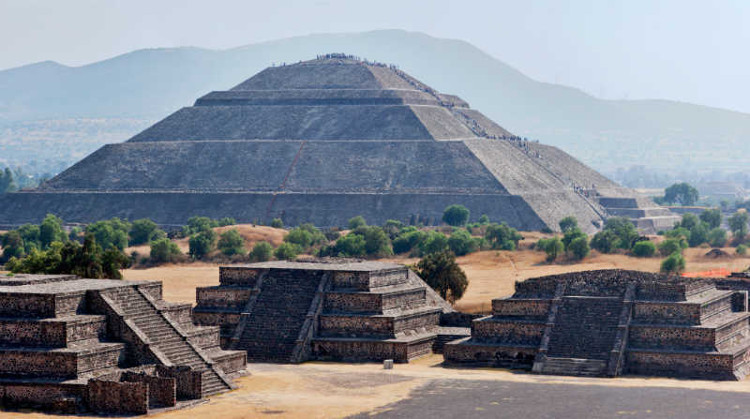The pandemic almost wiped out a whole country in 1545
Scientists find the type of bacteria that can cause cocoliztli epidemic.
Scientists studying the remains of cocoliztli pandemic patients took place hundreds of years ago and discovered traces of salmonella enteric bacteria , News.com.au reported today.
In 1545, the tragedy occurred with the Aztec empire in the territory of Mexico today. Many people began to show symptoms such as high fever, headache, bleeding from eyes, mouth and nose. Infected people often die after only three or four days.

Mexico experienced many changes when Europeans arrived.(Photo: News.com.au).
Within 5 years, the pandemic took away the lives of about 15 million people, approximately 80% of the empire's population. People call this disease cocoliztli, meaning "plague" in the Nahuatl language that the Aztecs use.
Cocoliztli is considered to be one of the deadliest pandemics in human history, roughly equivalent to the " pandemic " that took the lives of about 25 million people in western Europe in the 14th century, meaning about half of the population this place at that time.
When coming to the Americas, Europeans carry pathogens that local people have never encountered, so they cannot be immune. In the early 16th century, outbreaks of smallpox outbreaks killed 5-8 million people. About two decades later, the cocoliztli pandemic continued, causing about 15 million deaths. The second outbreak of cocoliztli from 1576 - 1578 killed about half of the remaining population.
"In cities and towns, people dug large trenches. From morning to sunset, the monks kept carrying bodies and putting down moats," described historian Fray Juan de Torquemada. Doctors at the time also stated that the symptoms of the disease did not match with diseases such as measles or malaria.
"The epidemic of cocoliztli in the period of 1545 - 1550 was one of the pandemics affecting Mexico after Europeans arrived. The second pandemic of the three pandemics was the worst and most deadly , " said the researcher. Ashild Vagene at the University of Tuebingen, Germany, said.
"Historians argue about the cause of the disease for more than a century. Now we can provide direct evidence through the use of DNA to contribute to solving the history problem that exists from This long, " she said.

The scene of Spanish people coming to Mexico in the 19th century illustration. (Photo: Kurious).
DNA analysis from 29 remains buried in a cemetery for cocoliztli patients, scientists found traces of salmonella enteric bacteria on teeth. This bacterium causes intestinal diseases, such as typhoid. However, the type of bacteria that caused pandemics rarely caused people to become infected today.
Many strains of salmonella are spread through food or water. They may have come to Aztec according to the domesticated animals brought by the Spaniards, the team said. Salmonella enterica appeared in Europe since the Middle Ages.
"We try to test all kinds of pathogenic bacteria and DNA viruses with genetic data. Salmonella enteric is the only pathogen discovered" , Alexander Herbig, co-author of the study, said.
However, it is also possible that some other pathogens cannot be detected or not scientifically known."We cannot be sure that enteric salmonella is the cause of cocoliztli pandemic. But we believe it should be considered a strong candidate," said Kirsten Bos, a researcher.
- Shivered by the 'catastrophes' that almost caused humanity to be wiped out
- H1N1 flu again broke out
- 16 people died, 150 were sick with MERS flu in Korea
- If a global pandemic breaks out, what is your safe place?
- 2020 pandemic flu attack humans?
- Three Japanese cities were wiped out
- After Ebola and Zika, the next pandemic may have begun that we never knew
- Flu pandemic spread, New York announced an emergency medical condition
- Poor countries have limited access to H1N1 flu vaccine
- Destroy 8 million chickens because of the flu
- A bird perched at the mouth of the opening of the pandemic killed 50 million people
- 'Biological antivirus software' could prevent the next global pandemic
 Discovered an ancient centipede fossil 99 million years old
Discovered an ancient centipede fossil 99 million years old Discovered bat-like dinosaurs in China
Discovered bat-like dinosaurs in China Discovered a 200-year-old bronze cannon of the coast
Discovered a 200-year-old bronze cannon of the coast Discover 305 million-year-old spider fossils
Discover 305 million-year-old spider fossils